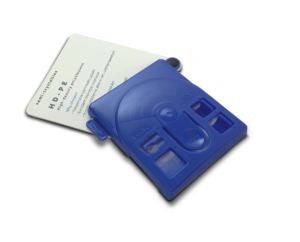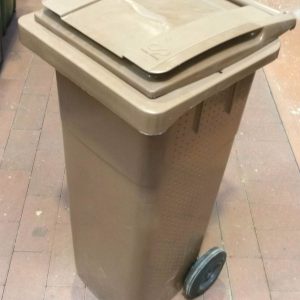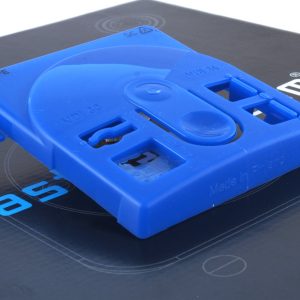
Polyethylene is the most widely used plastic in the world. Compared with PP, the mechanical properties are even more modest, but so is the price. HD-PE is resistant to chemicals, suitable for food packaging, and withstands cold better than PP.
The look and feel of High-Density Polyethylene and PP are so similar that they may be difficult to tell apart.
Why choose?
- Inexpensive. HD-PE is a commodity plastic.
- Good ductility in subzero temperatures (HD-PE has a glass transition temperature of -120°C)
- Good chemical resistance, even better than that of PP (e.g. petrol canisters are made of HD-PE)
- High impact resistance
Why not choose?
- Despite being semi-crystalline, HD-PE has limited resistance against stress cracking.
- PE is prone to hydrolysis while PP endures hot water better
- Poor UV-resistance
Typical applications:
- Bottle caps
- Toys
- Sleds
- Bins (preferably indoor, but commonly used in outdoor applications as well)
By examining the Plasticprop sample made of HD-PE, you can draw for example the following conclusions:
- The HDPE sample is not very stiff. When knocking on its edge, the sound is low-pitched and similar to that of the PP sample.
- The surface of HDPE is slightly waxy but very glossy. The surface is soft – this can be determined by scratching it with your fingernail.
- The filling window shows that HDPE runs well. The integral hinge has filled up and feels credible.
- The sample is even smaller in dimensions than the PP sample; the shrinkage of HDPE is substantial. The corner effect is present to some extent and the sample’s lower edge is slightly wavy.
- Considering the low cost of the material, the overall impression of quality is rather good.
- Spark-eroded draft surfaces are not badly scratched, probably because of the extensive shrinkage.
- The heat resistance of polyolefins is poor. If you put the HDPE sample in an oven, the heat will reduce its stiffness even further. In a manner typical of semi- crystalline materials, however, HDPE will not collapse –though it becomes very soft when hot, it will preserve and remember its shape.
- If you put the sample in a freezer, its toughness will not change significantly. HDPE is highly resistant to cold.
- The density of HDPE is less than 1. Like other polyolefins, the sample floats in water.


